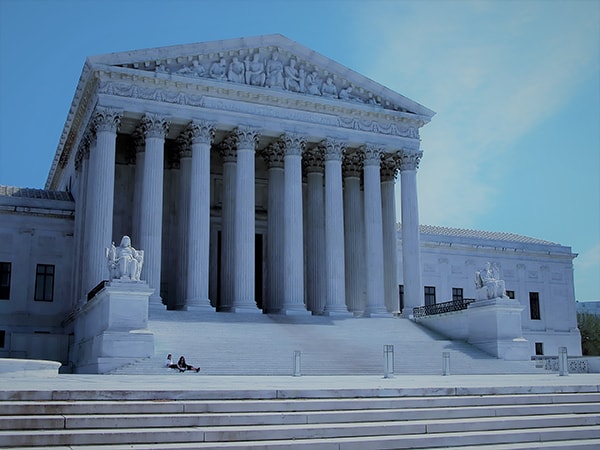Why Work With a Federal Crime Attorney: Secure Your Rights with Professional Legal Help
Why Work With a Federal Crime Attorney: Secure Your Rights with Professional Legal Help
Blog Article
Demystifying the Process of Federal Appeals: What You Required to Know
Browsing the intricate world of federal charms can typically look like traversing uncharted waters for those not familiar with the procedure. Comprehending the nuances of appellate court territory, the complexities of submitting a notice of charm, presenting an engaging brief, and making a convincing dental disagreement are vital elements that can considerably affect the end result of a case. By untangling the layers of complexity bordering federal appeals, individuals can gain a more clear insight into the systems that regulate this critical point of the lawful system.
Comprehending Federal Appeals Refine
Looking into the intricate world of the federal charms process reveals a methodical and organized journey through the judicial system. Federal appeals work as an important system for reviewing choices made by reduced courts. Understanding this process is crucial for anybody associated with legal procedures at the federal degree.
The procedure commonly starts with an event dissatisfied with a reduced court's judgment filing a notice of appeal. This sets off a review by a higher court, where a panel of courts analyzes the legal arguments offered by both events. Briefs describing the legal reasoning behind each event's position are sent, and oral debates might be heard to make clear intricate concerns.
The appellate court's decision is based on an extensive exam of the reduced court's process and the debates provided. The courts do not reconsider realities yet focus on whether legal mistakes happened that impacted the lower court's choice. As soon as the appellate court reaches a choice, it can attest, reverse, remand, or modify the reduced court's judgment, supplying clarity and finality to the lawful dispute. Recognizing this procedure is essential for navigating the intricacies of federal charms properly.
Appellate Court Territory Discussed
Appellate court jurisdiction refers to the range of instances that a particular appellate court has the power to make a decision and review upon. Unlike test courts that hear situations for the very first time, appellate courts are restricted to assessing decisions made by lower courts.
Appellate courts have jurisdiction over certain kinds of instances, commonly those including legal errors, procedural issues, or inquiries of legislation rather than accurate disputes. The jurisdiction of appellate courts is normally described in statutes and regulations that regulate the court system. Recognizing appellate court territory is crucial for celebrations involved in the appeals process as it identifies whether an instance is qualified for review and the degree to which the appellate court can interfere in the lower court's choice.
Declaring a Notification of Allure
The initial action in beginning the federal allures procedure entails submitting a Notification of Charm with the suitable appellate court. This crucial document formally alerts the court and the various other parties entailed in the situation that the appealing event plans to look for a testimonial of the reduced court's decision. Filing a Notification of Charm is a rigorous step-by-step need that sets the appellate process moving.
When preparing the Notification of Appeal, it is vital to ensure conformity with the certain regulations and standards of the pertinent appellate court. federal appeal lawyers. The file should generally consist of details such as the instance name, the lower court's name, the day of the judgment being appealed, and a succinct statement suggesting the premises for the allure

Instruction and Oral Disagreement
In the appellate procedure, presenting written briefs and participating in oral arguments play pivotal roles in supporting for the appealing celebration's placement before the appellate court. Briefs are comprehensive lawful files that lay out the events' arguments, lawful authorities, and analysis supporting their positions. These written submissions provide the court with a detailed understanding of the realities of the situation, the relevant legislation, and why the appealing party believes the lower court's decision need to be reversed.
Following the entry and review of the briefs, dental disagreements supply the celebrations an opportunity to additional clarify their placements, address any kind of questions the appellate courts might have, and highlight bottom lines from their created briefs. Oral debates are a possibility for the lawyers to persuade the courts via verbal advocacy and actions to questions from the bench.
Both the created briefs and dental disagreements are essential parts of the appellate process, enabling events to provide their instance extensively and compellingly prior to the appellate court. - federal appeal attorneys
Getting the Appellate Court Choice
Upon conclusion of oral disagreements and entry of created briefs, the following pivotal phase in the appellate procedure includes waiting for the decisive judgment from the appellate court. This duration of anticipation can be loaded with a mix of anxiousness and expect events involved in the charm. The appellate court's choice is usually supplied in a written layout and details the court's verdicts on the legal concerns presented, the thinking behind their choice, imp source and the judgment provided. The moment frame for obtaining the appellate court's decision can vary, but courts make every effort to supply timely resolutions. Once the choice is released, events should meticulously assess the court's ruling to recognize the result and establish any kind of more steps that might be essential. Whether the appellate court affirms, reverses, or remands the lower court's choice, recognizing the ramifications of the judgment is critical for all parties associated with the appellate process. Quickly assessing and comprehending the appellate court's choice is essential in browsing the next actions in the legal procedures.
Final Thought
Comprehending the appellate court territory, submitting a notice of appeal, preparing briefs, and providing oral arguments are all essential components of this procedure. Ultimately, receiving the appellate court choice can provide quality and resolution to legal conflicts.
As we proceed from comprehending the federal allures procedure to dissecting the ins and outs of appellate court territory, a fundamental element comes to light relating to the authority and limits of these greater courts in the lawful landscape. Appellate court territory refers to the extent of cases that a certain appellate court has the power to evaluate and decide upon. Unlike test courts that hear situations for the first time, appellate courts are limited to assessing decisions made by reduced courts. Recognizing appellate court territory is vital for events involved in the allures process as it determines whether a situation is eligible for testimonial and the degree to which the appellate court can interfere in the lower court's choice.

Report this page